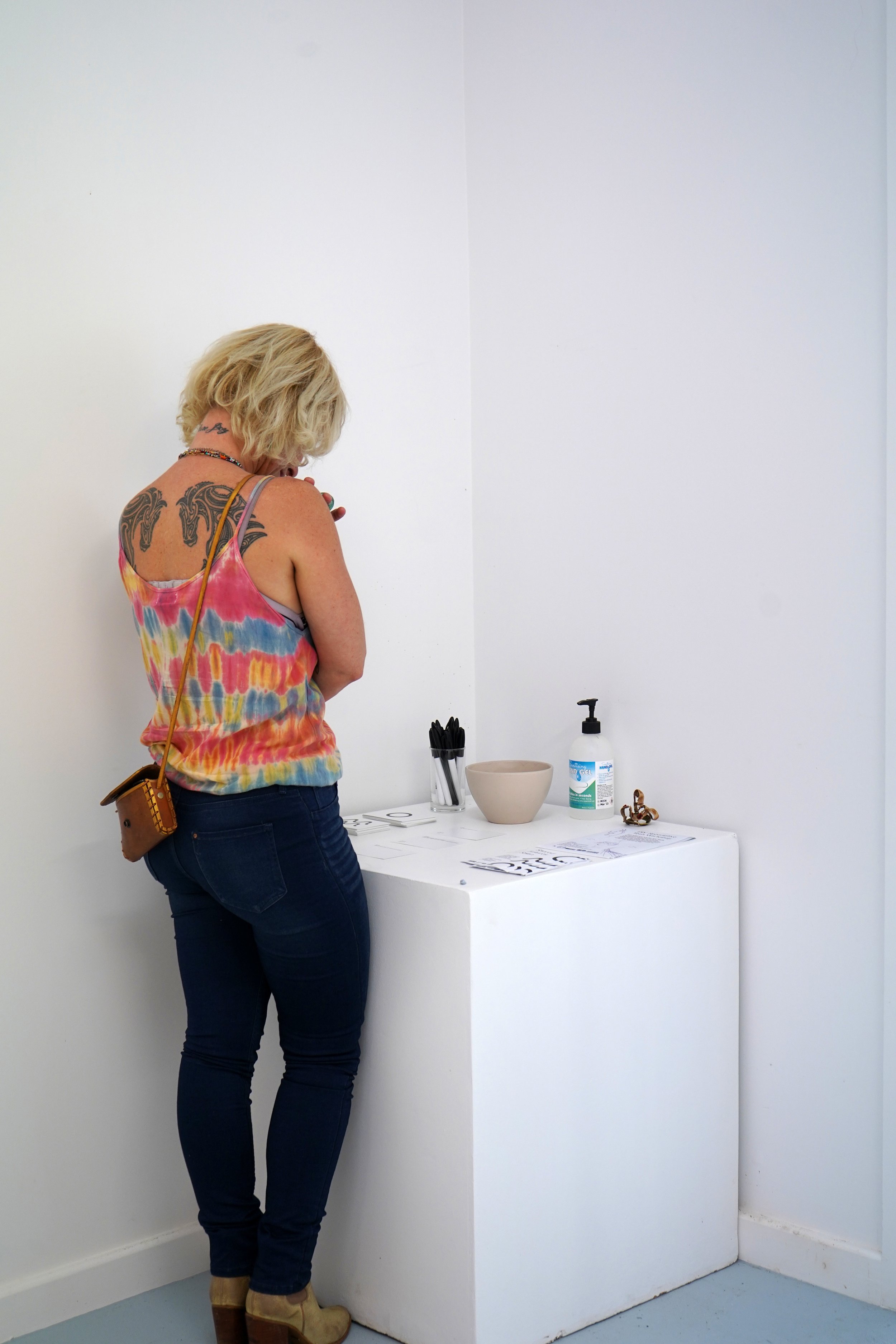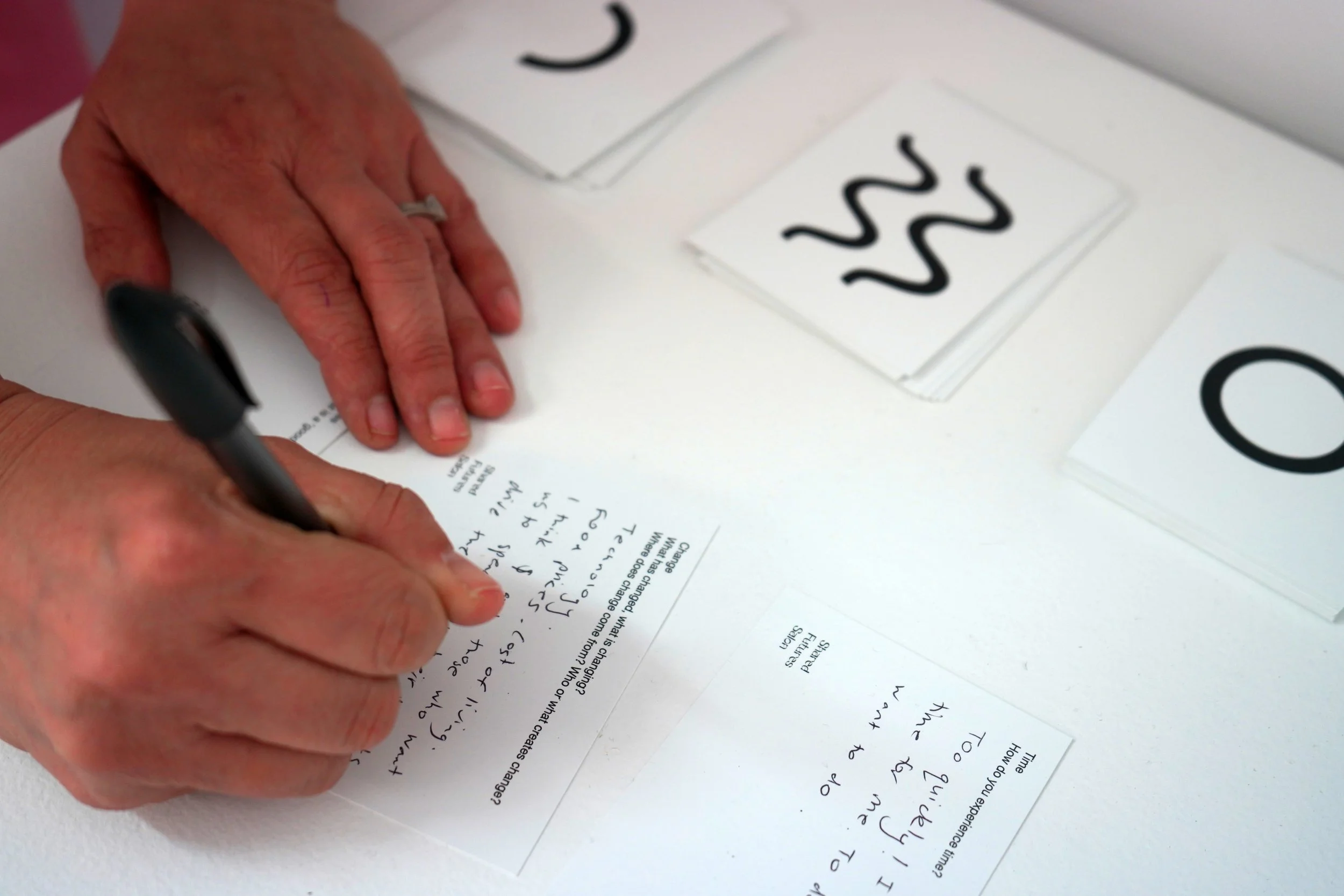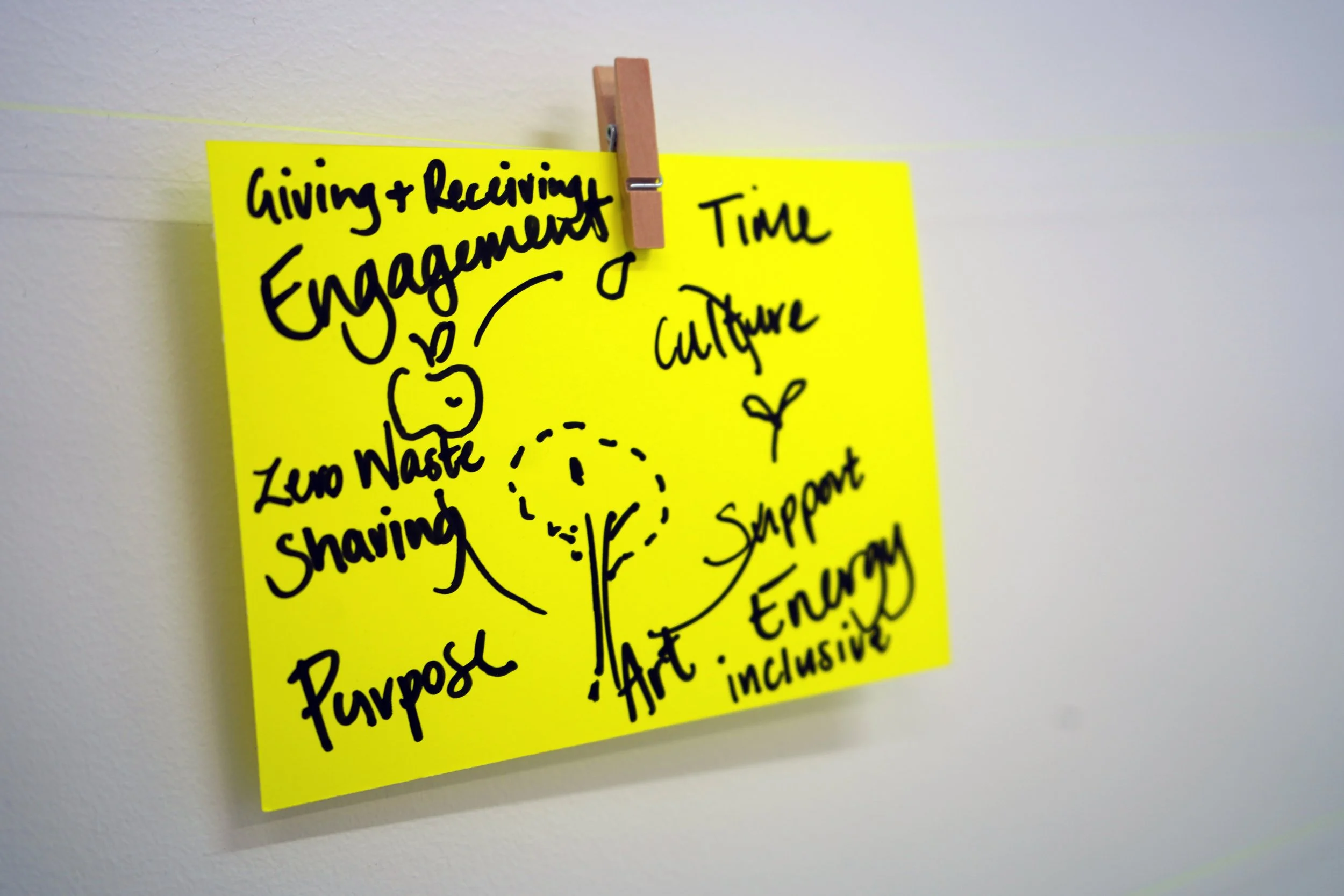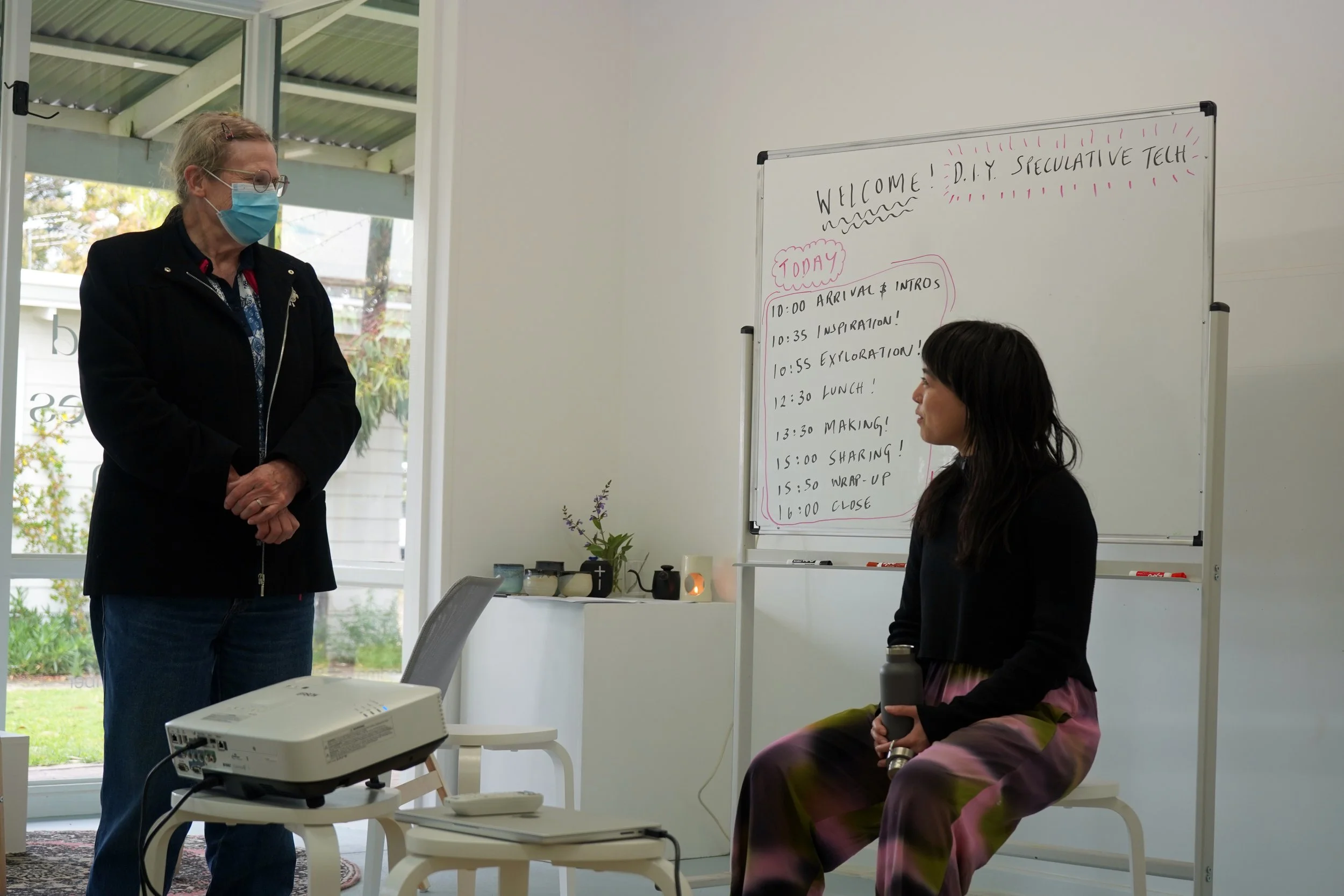Rural Utopias Residency: Ana Tiquia in Esperance #2
Ana Tiquia is currently working with the community of Esperance. This residency forms part of one of Spaced’s current programs, Rural Utopias.
Ana Tiquia is a transdisciplinary artist, cultural producer, curator, and future strategist. Integrating participatory art, design and futures practice, Ana creates public interventions: works that invite audiences into dialogue with ‘the future’. Her practice is one of inclusion that aims to ‘future’ with other humans, creatures, and things – to generate diverse, plural, and transformative future imaginaries. Ana has a deep commitment to the role of arts practice in relation to future inquiry, imagining, and social-ecological change. Her projects explore energy and material futures, futures of work and labour and the power dynamics encoded in algorithmic systems
Here, Ana shares an update:
In my second fortnight here, I shift from going 'out' into the community to have conversations, to creating spaces to welcome people into conversations about time, change, and 'good futures'. The Cannery has an empty shop space with a big bay window, and I take the opportunity to turn this into a space for sharing of stories and collective sense-making. I frame the space as a 'Shared Futures Salon', and invite people in to share their ideas of 'good futures' for community and place with me.
For this research stage of the project, I'm looking to gather 'data' on change within community and place here; to hear more about the cares and concerns of those who live here, and to learn more about the values underpinning people's ideas of a 'good future'. The Shared Futures Salon inhabits a hybrid participatory art/design/futures research form – typical in many ways of the work I often make. I'm aware that a 'salon' might challenge community expectations of what an artist-in-residence 'does', but I love to create work that opens possibilities: both in terms of opening dialogue about a community's shared future, as well as opening possibilities for art and arts practice. With the salon I'm hoping to create a space where visitors can contemplate and reflect upon their ideas of time, change, and futures in a way they might not in their everyday. A space for stepping away from a familiar context, and stepping into reflection and conversation. I choose the framing of a 'salon' as I like the deliciousness of the word: both its combined association with intellectual discussion and display of art, alongside hairdressing and beauty services; both spaces of intimacy and conversation, welcome and hospitality.
Katie and I launch the Shared Futures Salon as a 'pop up' at the well-loved Museum Village Market in town, to speak with a wider mix of the community. Kids wander in with their parents, we meet a few locals who aren't regular visitors to the Cannery but want to discuss their cares and concerns for the future. Many of the responses I receive talk about community inclusion and unity. Visions of 'good futures' that people share with me include people "coming together", the town being united, and in one vivid account someone shares that a good future for them includes "First Nations People and Non-First Nations dancing, singing, and celebrating around a huge bonfire – everyone coming together". Themes of how time is experienced begin to emerge – from experiences of time moving “too fast”, or being so full of distractions that it leads to overwhelm, to the idea of time as a “precious commodity” that needs to be savoured and experienced slowly to maximise its value.
Inclusion and creating inclusive communities and spaces emerge as deeply held values for those who visit the Salon and share their stories. I run a DIY Speculative Tech workshop in the Salon one Saturday, a day- long workshop aiming to share some futures and foresight tools alongside speculative design and critical technology approaches. While sharing these frameworks, I am keen to use 'speculative technology' as a way into understanding more deeply the values, beliefs and worldviews held by participants, and also by the community here. Within the group, inclusion and inclusive design emerge as key values. Fiona, one of the workshop participants designs a device worn as a brooch which illuminates when someone reaches the fullness of their capability, this device 'measures' individual capacity not ability – it is an artefact from a non-ableist future.
Alongside those who speak of valuing of inclusion and desires for community unity, I am equally given accounts of change within a community that some feel is 'divided', 'segregated', and in the words of a young man who tells me he's from “the poor part of town”, a community which is "cold". I begin to wonder whether optimism and positivity for the future might itself be considered a privilege, one accorded to those who have experienced a degree of inclusion and better fortunes, be it by class, race, ability, or economic mobility. One person I spoke to voiced concern for what they see as a widening gap between the "haves" and "have-nots" in the community. Broad acre farming has a relatively recent history here in Esperance and the region, but within a couple of generations has created one of the most successful and affluent farming regions in the state. Esperance is notable for the philanthropic work of local farmers and there are a couple of wealth distribution initiatives that farmers have initiated in the last few years to 'give back' to the community: The Esperance Agricultural Fund and the Mount Burdett Esperance Community Fund, established by farmer Chris Reichstein, who held his farm in a trust to generate funds to benefit the local community, before passing away last year. But the person I speak to is unsure whether wealth distribution in these forms will be enough to offset what they see as a rapid increase in wealth inequality within the town.
There are lines that divide communities, and in Esperance one of them is the Jetty. It's not long that I'm in town before I hear the stories. The former Tanker Jetty had served a number of roles in its lifetime before being replaced by a new jetty last year amidst much controversy. For some, the jetty was a symbol of community, a gathering point of the town that held memories, stories, and much fondness. For others, the jetty was a wooden structure that had outlived its expected life and original use, and was falling down. 'Divisive' is the word most people have used when explaining the jetty redevelopment to me, and the hurt that the town continues to experience from the rifts that emerged in community are still palpable.
But the jetty marks another dividing line in Esperance, one which isn't as readily discussed. The jetty used to signal the 'Black Line' – a line of racial segregation dividing First Nations People and white settlers in Esperance. A plaque and interpretive panel stand near the redeveloped jetty today, inscribed with the words of Wudjari Nyungar Elders who relate their experiences of growing up amidst racial segregation in the town and how the jetty served as an “imaginary line” they weren't allowed to cross into or out of town after dark. Established in 1930, this plaque describes how the building of the original jetty coincided the imposition of this 'sunset curfew', the jetty existed as a physical marker the segregation of the community.
An 'Esperance Future Forum' comes to town later in the week. It's run by Leadership WA, and an open expression of interest is run in the local paper for community leaders who'd like to participate. I contact the team, and am invited to attend as an observer. For the research stage of this project, I find it fascinating as community members are asked to give voice to what they perceive as challenges, opportunities, and future scenarios for Esperance and region. One of the strongest themes I observe across the day is a high degree of optimism for the future of the community and region. Early in the day, participants are invited to use a mobile app to share their perspectives on a range of questions. One is “Are you optimistic about the future of your region?”. 23 participants voted 'yes', with just a single 'no'. Aspects of Esperance that were most celebrated and valued included: “people”, “environment”, “community”, “landscape”, “lifestyle”, and “space”. Most identified regional challenges included “medical access”, “housing”, and “isolation”.
An interesting question is posed asking participants to name what “the bravest thing to do” might be. A few written responses speak to “addressing racism and discrimination”, and “Acknowledging negatives, including racism and inequality,” one person writes that “No one is willing to address 'the elephant in the room'”, and another writes that the bravest thing to do would be to “Unite”. Later in the day, in a break-out group the topic of discussion revolves around perceived inequity in the town. Racism is raised as a particular form of discrimination driving inequality, especially for First Nations People. I notice that racism isn't addressed within the wider form, despite being raised a number of times in smaller groups and mentioned by a few as “the bravest thing to do” via the app.
'Rural Utopias' is a deliberately provocative title. Utopia itself is a complex term with a number of resonances, one being that Thomas More who coined it saw it as a 'no-place'. Utopia never really exists, or it does so problematically in its subjective sense: – one's utopia can be another's dystopia. The conversations I've had this fortnight have been overwhelmingly positive. Even those who highlight challenges in their community convey a sense of possibility and positivity for where they see their community heading. After talking, and reading through reflections populating the walls of the Salon, I wonder to what degree Esperance might be seen as a microcosm of 'Australia' as a whole: a country of relative affluence offering a great life and 'lifestyle' for many, but for whom conversations about class and race are experienced as challenging and often avoided. Who is lucky in our “lucky country”, and is “good luck” always good for all? How do we negotiate questions of difference and inequality within our communities in Australia, and how do we discuss what a good 'shared future' looks like when many experience hurt from divisions in the past and present?
On the walls of the Shared Futures Salon are quotes from community members I've had discussions with. On discussing division, one person says “The root cause is people not having the courage to talk to one another, to have these difficult conversations in pursuit of higher values and resolving an issue,” another says “You look at (our) community and there is a sense of unity. A sense that people want to be involved in things coming together.” I am reminded that amidst difficulty and uncertainty is always hope. Rebecca Solnit, in one of her essays on the subject writes: “Hope locates itself in the premises that we don’t know what will happen and that in the spaciousness of uncertainty is room to act...Hope is an embrace of the unknown and the unknowable, an alternative to the certainty of both optimists and pessimists.” Hope itself, is Esperance's namesake, named after the ship Espérance, French for "hope". In this fortnight's conversations, I sense the hope alive in this community. People are neither blindly optimistic nor pessimistic, many express a strong desire for unity and cohesion while acknowledging the present challenges and divisions within community. I emerge from these conversations buoyed by a sense of hope myself.


















